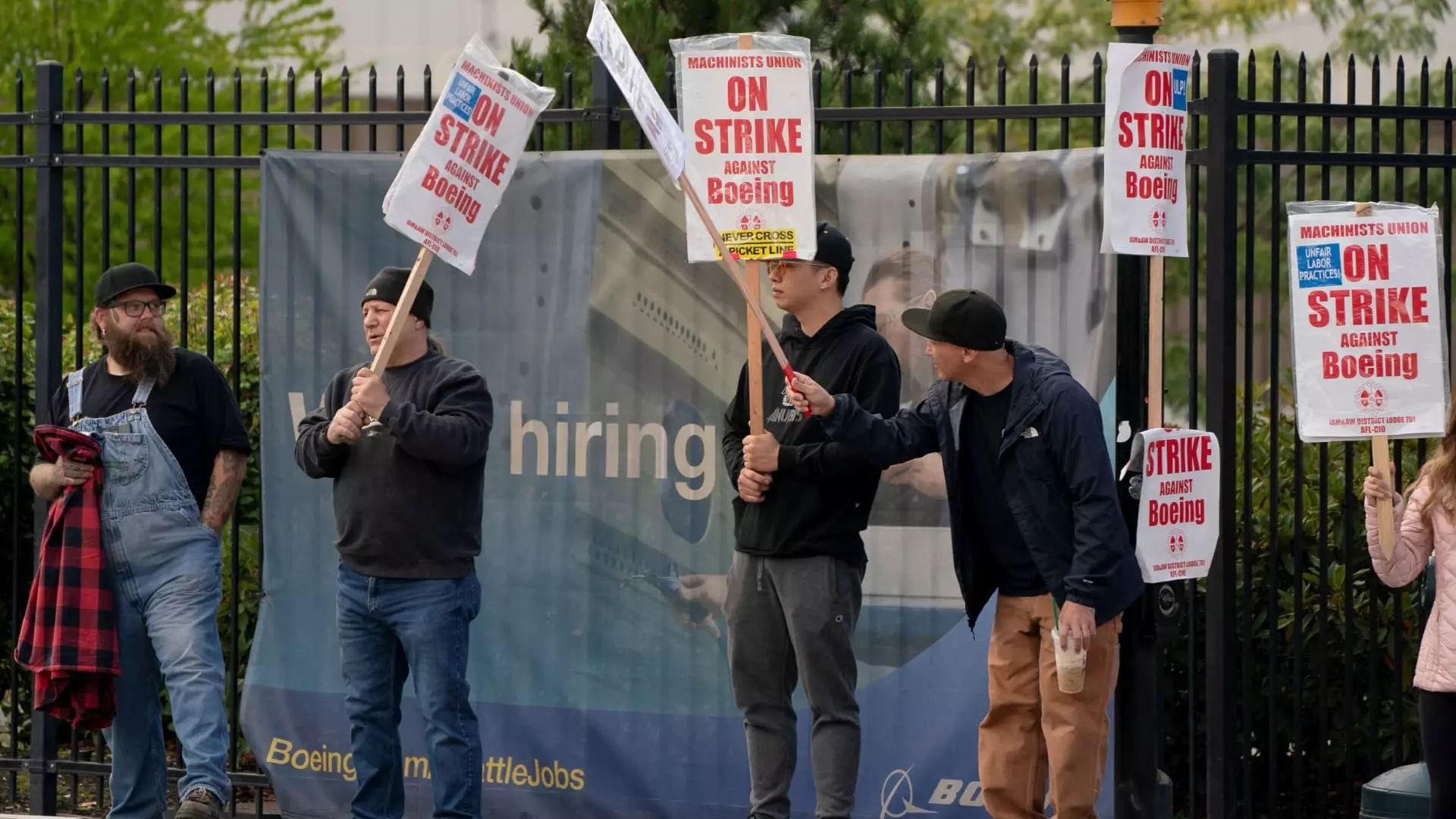Boeing finds itself at a critical crossroad, grappling with a significant strike involving over 30,000 factory workers and the subsequent need for drastic cost-cutting measures. As the aviation giant faces the consequences of a labor dispute that has halted aircraft production, the company’s leadership is now forced to navigate a complex landscape of financial pressures, operational disruptions, and workforce morale. The situation is emblematic of broader challenges facing companies in fluctuating economic climates, highlighting the delicate balance between maintaining production capabilities and ensuring employee satisfaction.
The strike instigated a dramatic interruption in Boeing’s production lines, particularly in the Seattle region, where the majority of its factory workforce is situated. By walking off the job following the rejection of a tentative labor agreement, workers have not only slowed the assembly of key aircraft models like the 737 Max, 767, and 777 but have also initiated a cascade of financial ramifications for both Boeing and its extensive network of suppliers. The company’s Chief Financial Officer, Brian West, described the need for “significant reductions” in supplier spending, indicating that the ramifications of the strike extend far beyond the immediate workforce to affect myriad stakeholders across the supply chain.
In response to the strike, Boeing outlined a series of measures aimed at preserving cash flow, including a hiring freeze, reduced travel for nonessential staff, and a moratorium on new purchase orders. These tactics indicate a reactive approach to financial stabilization during an unpredictable period. Despite these choices, West emphasized that the company remains committed to safety, quality, and direct support for customers—critical areas that cannot compromise even during financial tightening. This dichotomy presents a challenge: how does Boeing maintain operational integrity while employed in short-term survival strategies?
Moody’s and Fitch Ratings have signaled potential downgrades to Boeing’s credit ratings as a consequence of the ongoing strike, indicating that prolonged labor unrest could further exacerbate the company’s already precarious financial situation. With about $8 billion burned in the first half of the year, driven in part by production slowdowns due to earlier incidents, Boeing’s financial resilience is under scrutiny. Moreover, the possibility of temporary furloughs for many employees, including managers and executives, may further impact workforce morale and productivity, creating long-term challenges for the company in regaining stability.
As Boeing attempts to move forward amidst labor strife and financial pressures, the company’s development will hinge on successful negotiations with workers and a return to productive operations. The strike represents not just a disruption but also an opportunity for Boeing to reassess its labor relations and production strategies in a landscape that increasingly prioritizes stakeholder satisfaction and operational resilience. How effectively Boeing can leverage this situation to emerge stronger remains uncertain, but decisive action and transparent communication will likely play crucial roles in shaping the company’s future trajectory.


Leave a Reply